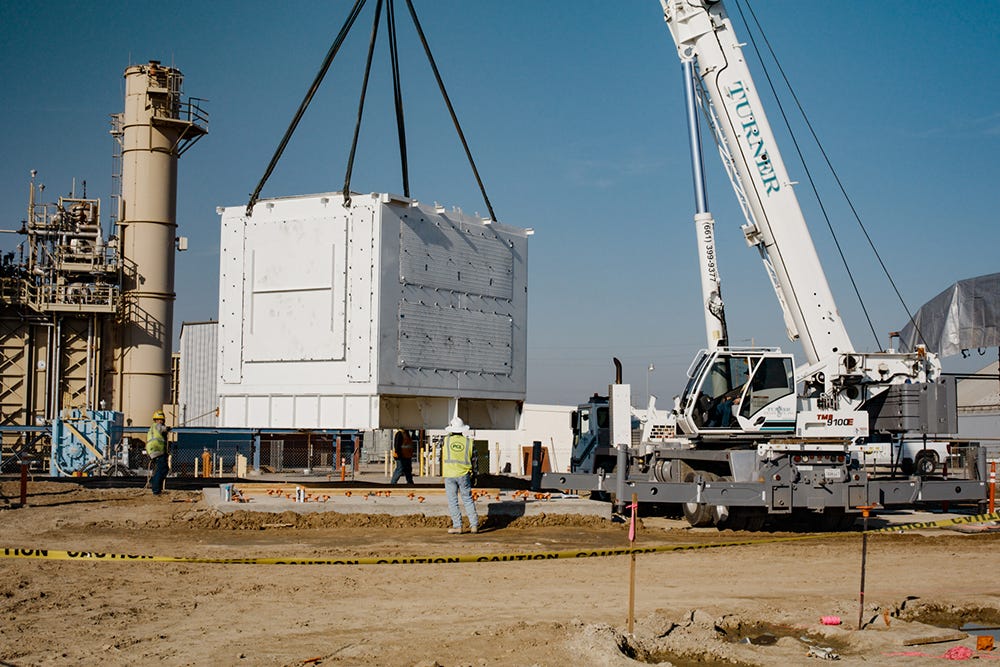Hot Pockets
Are thermal batteries the next big thing?
“When you can't make them see the light, make them feel the heat.” – Ronald Reagan
Having recently returned from one of the largest food conferences in the US, a colleague remarked that a startup selling rather basic water in aluminum cans had achieved a private valuation in excess of a billion dollars. No, really. The valuation is commensurate with the irony of its manifesto: “We’re just a funny beverage company who hates corporate marketing as much as you do. Our evil mission is to make people laugh and get more of them to drink more water more often, all while helping to kill plastic pollution.”
A quick trip to our Google machines validated that, sure enough, Liquid Death did indeed just raise $67 million at a $1.4 billion valuation from a combination of strategic investors, twice the valuation achieved in an earlier funding round. For a company that hates marketing, the founders sure have done a bang-up job of it. Liquid Death “attributes much of its sales growth to its marketing, counting 7.9 million followers across TikTok and Instagram.”
If there has been one thing drilled into the heads of the app-scrolling dopamine addicts, it’s that physical death awaits the planet barring a total “green” transition. If putting water into an aluminum can merits unicorn status, surely heating rocks in the name of enabling renewable energy must be worth multiples of that? That’s what came to our minds when we opened the Saturday edition of the Financial Times and read “Hot rock batteries are coming to Europe – soon.” A slew of startups is working on the challenge of what to do when the wind blows too hard and the sun shines too brightly, and the solution they have arrived at involves storing thermal energy in bricks and rocks.
To whom shall we make out the check?
At issue is chaotic intermittency, the grand Achilles’ heel of wind and solar. Depending on the weather, spot electricity prices in markets saturated with renewable energy are known to swing wildly. Shortages in the face of steady demand send prices soaring, and ill-timed abundances leave grid operators scrambling to pay somebody to deal with the excess. Numerous solutions to this dilemma have been proposed, from installing massive lithium-ion battery packs to raising and lowering giant bricks as a form of gravitational storage—the obvious horse of not installing intermittent renewables in the first place left the barn long ago.
Enter Antora Energy, a firm whose name came up several times among our contacts in the venture capital (VC) space. In keeping with the tried and true VC adage that every deal is undersubscribed except for the ones that are oversubscribed, Antora Energy just closed one of the biggest Series B raises of the past year, bringing in an eye-watering $150 million from blue-chip VC investors:
“Thermal battery maker Antora Energy on Thursday said it has raised $150 million in a funding round led by a tie-up between the world's biggest asset manager BlackRock (BLK.N) and Singapore state investment firm Temasek.
The BlackRock-Temasek partnership, called, Decarbonization Partners, led an investor group including Emerson Collective, GS Futures, The Nature Conservancy, Lowercarbon Capital, Breakthrough Energy Ventures and top global miner BHP's (BHP.AX) venture capital unit.
The fresh financing for the startup will underpin an increase in production of its batteries, blocks of solid carbon heated with renewable energy. Energy from those batteries could be used in industrial processes that use heat to melt and change raw ingredients, in sectors from chemicals to concrete.”
The tone of the introduction to this piece captures well our mindset when we embarked down the thermal battery rabbit hole, but we must confess we found Antora Energy to be different than most of the innumerable, far-fetched, ESG-focused pitches we’ve heard over the years. The company—and a few of its startup competitors like Rondo—might really be on to something that could impact the energy markets in the years ahead. While there are no guarantees in the energy startup space, developments in the latest generation of thermal batteries are worth keeping a close eye on. Let’s explore why.



